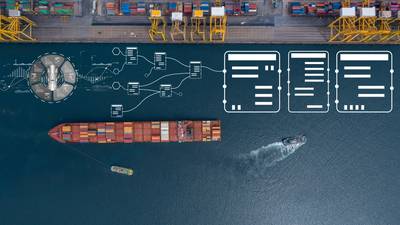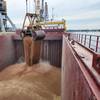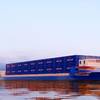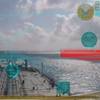The Real Cost of Net Zero Ports
Zero emission is a nice idea, but who’s going to pay for it? The U.S. EPA is readying big money for zero emission ports.
The U.S. Environmental Protection Agency (EPA) is working on two high-profile port initiatives that it hopes will move the needle in a big way towards U.S. ports’ zero emissions (ZE) operations and clean air goals.
The first initiative started last May when EPA published a request for information and comments that would help the Agency develop Guidance it could use to evaluate funding requests for projects for zero-emission vehicles, port equipment and related infrastructure. EPA has $4 billion available for these investments: $1 billion is for heavy duty vehicles; $3 billion is for clean ports.
The second initiative was announced in August when EPA opened up the application period for 2022-2023 DERA funding – Diesel Emissions Reduction Act grants. DERA is not a new program, funding started in 2008. DERA money is linked to federal budgeting. As a program, DERA is not as rich as EPA’s upcoming ZE funding. The new round of DERA funding totals $115 million; still, that’s substantial considering that total DERA funding from 2008 to 2020 was $171 million.
DERA’s goal is to help fund projects that reduce diesel emissions and exposure, especially at ports and areas designated as having poor air quality. Examples of recent projects (2020) include:
- $1 million to the Connecticut Maritime Foundation Inc. to replace engines in a New York ferry.
- $1.1 million to the Georgia Ports Authority to replace 37 drayage trucks operating in Savannah.
- $2.3 million to the Virginia Port Authority to replace 10 diesel straddle carriers with Tier 4 hybrid powered equipment.
- $323,773 to the Port of Seattle to install marine shore power at the Bell Street Cruise Terminal.
The DERA application deadline is December 1. Award maximum is $4.5 million. EPA expects to grant between 4-10 awards in each of EPA’s 10 geographical regions. Watch for new awards in 2024.
New: EPA’s upcoming $4 billion ZE guidance
EPA’s ZE initiative, announced in May, reached an important milestone in June when the public comment period closed. EPA wanted insights on issues pertaining to –
- ZE class 6 and 7 heavy-duty trucks and port equipment;
- Charging and fueling infrastructure;
And information on –
- Availability and production capacity;
- Performance;
- Pricing; and,
- Program design, best development practices and workforce training needs.
The response from port and industrial leaders was extensive. Here’s a look at some top concerns and suggestions.
Port leadership
Comments from the American Association of Port Authorities (AAPA) are based on information from its membership - leadership at America’s top ports. AAPA comments cover a wide range of issues. The following is a review of some of those issues.
Regarding domestic production (Build America, Buy America, or “BABA”), a critical priority for DOT, EPA and DOE programs, AAPA writes that “the vast majority of equipment types have zero American manufacturers” and that delivery lead times are typically in the 12-18 month range.” AAPA suggests that because of this lead time “it is critical that EPA conduct its grant administration and permitting in such a way that grants can be obligated prior to the delivery of equipment.”
Regarding performance, AAPA notes that real work experience remains limited, and questions are still open about long-term dependability. Reports from one port said that electric yard tractors provide 9-10 hours of “light work” and 7-8 hours of “heavy work.” Some ports are looking at increasing the number of tractors to allow one unit to charge while another works. “This arrangement” AAPA comments, “would obviously be far from ideal and would cost significantly more than employing a single diesel-powered tractor.”
Similarly, the Northwest Seaport Alliance (NWSA, includes the Ports of Tacoma and Seattle) reached out to its terminal operators about funding and project priorities. NWSA commented that electric yard trucks “have functioned well” and that “the user experience has been very positive and there have not been any range constraints.” One caution, though, is that is based on about 9 hours of operation, a schedule that allows overnight charging. NWSA writes that for terminal operators battery range is a constraint for some applications, “especially duty cycles that require two or more shifts per day.”
Regarding domestic materials and sourcing to meet Buy America requirements NWSA write that some charging equipment could comply but there are no commercially available trucks. Northwest terminal operators indicate interest in “small scale deployments of zero emission terminal tractors, provided ample grant funding”. “These deployments” NWSA advises, “will need to be significantly de-risked since they will be the first in our region at marine cargo terminals.”
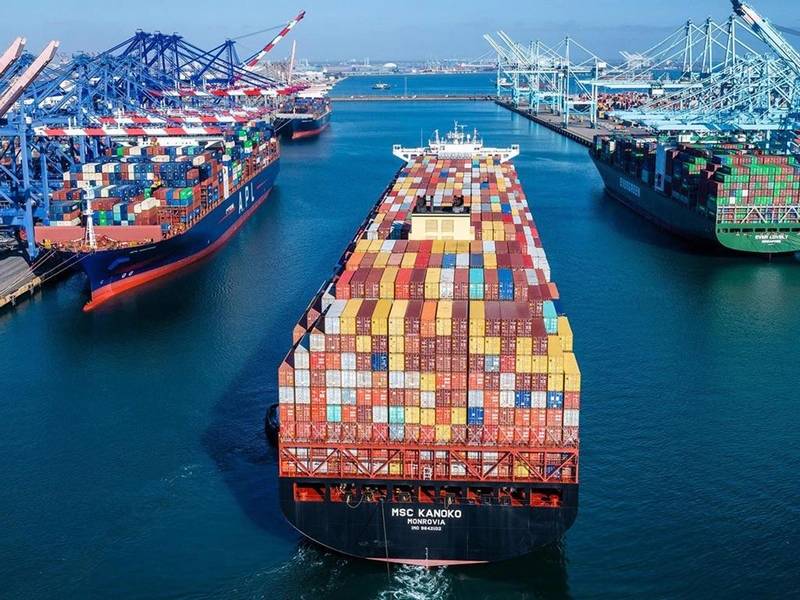 Pacific ports are lasered-in on ZE operations. Image courtesy of Port of LA.
Pacific ports are lasered-in on ZE operations. Image courtesy of Port of LA.
AWO – American Waterways Operators
AWO wants EPA to include ZE vessel propulsion systems in the definition of ZE port equipment or technology “provided that the vessel involved is a harbor craft.” AWO’s comments are written by Caitlyn Stewart, VP of Regulatory Affairs. Stewart writes that “the Clean Ports program represents a generational opportunity to reduce the carbon footprint of our ports, including the harbor craft that are so integral to port operations.”
Stewart points out that there is no dedicated, direct federal funding for vessel engine/emission upgrades to reduce greenhouse gas emissions. This is in contrast to funding availability for road and nonroad vehicles.
Additionally, regarding funding, AWO suggests that the selection criteria for Clean Ports grants should give extra weight to projects that provide charging or fueling infrastructure for ZE maritime vessels that call on the port, as this will provide benefits beyond those projects focusing on vessels and vehicles working within a port.
Stewart comments that it will take several different clean fuels as well as electric charging options to decarbonize ports. Therefore, Stewart advises EPA to make funds available for a range of fueling options “as there is no single zero-emission technological solution available to meet the diverse operational needs of the port equipment and vessels used in the maritime and intermodal transportation sectors.”
Pricing
There’s no question that $3 billion is a lot of money. But similarly, nobody questions that it will be very expensive to transition to zero emission ports. Some of these larger costs – for utility projects and port infrastructure – are eye-opening.
AAPA, for example, tells that one of its member ports commented that “in general, electric models cost twice and hydrogen three times as much as diesel machines.”
AAPA writes that shore power systems cost about $20 million per berth. That figure, AAPA adds, “was consistent for multiple ports building shore power systems for cruise or cargo berths.” This work would include a new substation, duct bank work, switch gear and cable-handling equipment.
With hydrogen, one of AAPA’s member manufacturing companies wrote that a payback period is entirely dependent on the cost of fuel “as the cost of hydrogen makes up about 70% of the total cost of ownership of a hydrogen fuel cell vehicle.” Because the hydrogen supply chain is just emerging, and federal production incentives have not had sufficient time to impact national markets, AAPA writes that “it is difficult to estimate the payback period of hydrogen equipment.”
Similarly, NWSA references shore power costs and its latest estimates are that shore power will cost between $8 million and $15 million per berth. It also notes that shore power does not provide a financial return to the port, but to the vessel operator. NWSA writes that it needs a minimum of 50% of total project costs, from federal funds, for shore power projects. Furthermore, it suggests that utility upgrades be eligible for funds.
With specific equipment, NWSA similarly cites estimates that ZE equipment can be three times more expensive than diesel equivalents. Related charging infrastructure could cost about $100,000, depending on what might already be on site. NWSA advises EPA: “We believe that it is safe to assume similar or greater cost multipliers for other types of zero emission cargo handling equipment, which are generally farther from full commercialization than terminal tractors.”
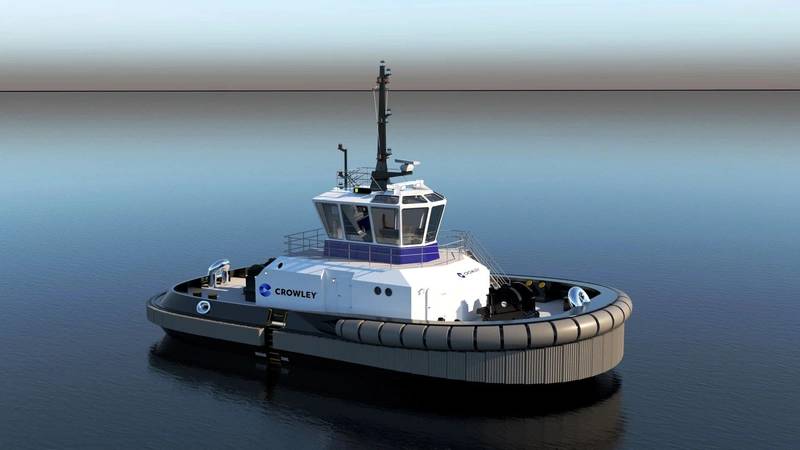 Crowley is developing the e-Wolf, the nation’s first all-electric tugboat, said to be ready for launch in 2024. (Image: Crowley)
Crowley is developing the e-Wolf, the nation’s first all-electric tugboat, said to be ready for launch in 2024. (Image: Crowley)
Crowley is developing the e-Wolf, the nation’s first all-electric tugboat, said to be ready for launch in 2024. Crowley expects zero and near-zero-emission harbor craft to be “approximately twice the cost of a conventional diesel tug, and that does not necessarily include the cost of the charging infrastructure.” Copyright Crowley
Private sector comments
Crowley is developing the e-Wolf, the nation’s first all-electric tugboat, said to be ready for launch in 2024. The company tells EPA there are just three battery developers producing in the U.S. It writes that “this limited competition and the nascency of zero-emission vessels in the United States leads to challenges on cost and may inhibit the ability to achieve standardized charging systems for the maritime sector in the near future.”
Crowley’s comments – signed by James Dumont, Grant Director – are expansive. It writes that U.S. shipyards are struggling against global competition. “A lack of demand for non-government vessel construction,” Crowley writes, “has ceded technical expertise to specialized foreign shipyards which are able to construct vessels in as little as one-third the time it takes an American shipyard.” Crowley suggests that large-scale ZE investments “could incentivize shipyards to retool to mass produce certain vessel classes in a manner more akin to an assembly line as opposed to the one-off vessel construction common today.”
Regarding pricing, Crowley’s assessment is stark, as the new ZE economy starts. Crowley expects zero and near-zero-emission harbor craft to be “approximately twice the cost of a conventional diesel tug, and that does not necessarily include the cost of the charging infrastructure.”
Conventional diesel tug: $12 million to $18 million. A full battery e-tug: $25million or more. Hydrogen: triple that of a conventional tug.
Westinghouse Air Brake Technologies (WABTEC), headquartered in Pittsburgh, designs, manufactures and services freight rail and marine transportation projects. The company writes that it is “developing a commercial strategy that provides a clear path to power new locomotives and repower existing locomotives with batteries, hydrogen internal combustion engines, and hydrogen fuel cells.”
The company writes that EPA’s initiative provides a “strong avenue to support the deployment of clean energy technologies in the broader freight ecosystem.” It writes that “Federal investment is critical to support the demonstration, deployment, and adoption of clean energy technologies.”
In reference to its marine operations WABTEC specifically cites successful ferry operations. Ferries can be recharged during loading and unloading, keeping the vessels in service. In a system in use in Norway, charging times vary between “a few minutes to an hour.” Reliability is over 98% for vessels operating up to 14 hours/day.
Marine charging sets short-term high-power demands. These peaks, WABTEC writes, “have the potential to challenge the resiliency of electric service providers and stress local grids and power plants.” Peak offsets could come from battery storage systems or local power generation which secures power availability at the spot.
Regarding BABA, WABTEC asks EPA to “keep in mind the near-term challenges to meet Build America Buy America (BABA) requirements. EPA must allow sufficient time for U.S. manufacturing companies (to) undertake efforts and invest resources to enhance their domestic supply chain and comply with these requirements.” WABTEC suggests that EPA needs to balance the need for domestic content with ZE goals at ports.
Red Hook Container Terminals is based in New Jersey. Its comments reflect partnership operations with Climate Change Mitigation Technologies and EV Edison. It has direct experience, starting in 2021, with 10 BYD heavy-duty battery electric terminal tractors at Port Newark. RH seeks to convert all 35 diesel tractors as well as top-pickers, cranes, and refrigerated power units to battery electric.
Regarding performance, RH tells EPA that the 10 BYD tractors have had virtually no problems over two years. But the company references two important factors for start-up: New Jersey provided a funding grant of 75% and the site had existing, sufficient electrical service and amperage.
In a section titled “Key Challenges” RH notes that utility-side electric power upgrades are required at just about all ports. RH writes that “the existing grid is simply not sized to support the significantly increased demands created by EV fleet charging in Ports.”
To work around waiting for these upgrades, RH’s partner, EV Edison, has developed mobile battery energy storage systems that can be deployed on marine barges and tractor-trailer trucks to solve the immediate problems of available power supply and electrical equipment shortages. RH writes that “barge-based storage and charging systems are ideally suited for EV fleet charging at marine terminals in Ports because that can provide the necessary power for EV fleet charging now.” RH writes that “with the proper level of federal funding” battery storage can be deployed at Red Hook’s terminals.
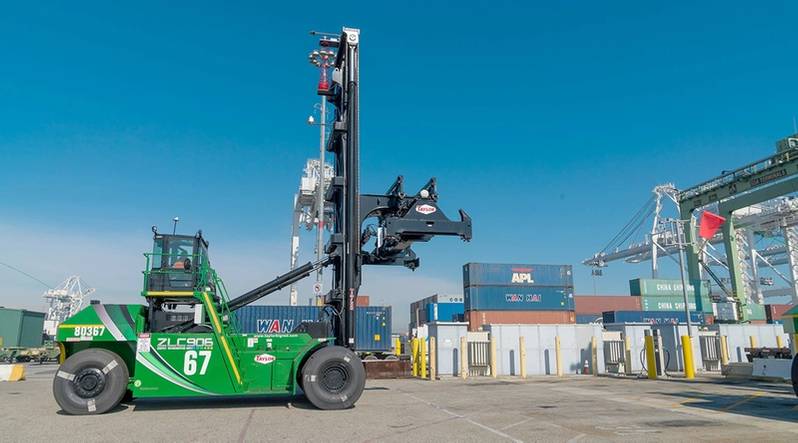 Zero emissions equipment. (Photo: Port of Long Beach)
Zero emissions equipment. (Photo: Port of Long Beach)
Zeeboat
Startup Zeeboat reflects ideas and possibilities from entrepreneurs newly drawn to zero emission markets. Zeeboat is based in New York. It is collaborating with Houston-based Industrial Service Solutions, The Shearer Group and Ingram Industries. Zeeboat CEO Jonathan Braun says the availability of grant money, such as EPA’s clean ports initiative, is critical for developing balanced, equitable financing. Zeeboat’s plans include towboats and pushboats for a full range of applications, from coastal ports to the inland waterways. An initial project has been on harbor-based container on barge service, the kind of back-and-forth work assignment particularly well-suited for battery powered vessels. EPA’s final Guidance is of keen interest to emerging companies like Zeeboat.
Next steps
EPA received more than 100 comments in response to its request for information. When asked about its timeline for the Guidance and related funding EPA said it anticipates releasing the new Clean Ports Program funding opportunity in late winter 2024. Funds are available to eligible recipients through September 30, 2027.




